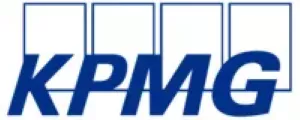Distributed Ledger Technologies (DLTs) are, at a high level, a digitised form of a traditional ledger.
For a ledger to serve its purpose existing records should not be erased or modified, and it needs to be accurate as doing otherwise would be fraudulent.
Traditional ledgers rely heavily on trusting that the book-keeper, institutions and intermediaries monitoring the relevant activities are being honest and truthful. Yet there have been instances where the trust put in these institutions was abused with ramifications felt globally, such as with the 2007 financial crisis. The most well-known form of DLT is the Blockchain. Other notable examples include the Tangle and Block-Lattice.
DLTs gained significant prominence throughout 2017, heavily driven by the surging popularity of cryptocurrencies like Bitcoin and their increase in market value throughout the year. 2017 also saw a substantial upsurge in Initial Coin Offerings (ICOs) for organisations to obtain financing much like a traditional IPO, but as ICOs are largely unregulated the whole process becomes quicker and easier. On the flip side, this (currently) unregulated ICO market is also prime preying ground for scams which is why a large number of countries are scrambling to "regulate" them in one shape or another, with Malta taking a prominent and leading role. In fact, towards the end of 2017 the Malta Financial Service Authority (MFSA) issued a consultation document to the public specifically on ICO's, Virtual Currenices (VCs) and related service providers. The purpose of the Consultation document was to present to stakeholders a proposed policy which will be adopted by the Regulator for the creation of a regulatory framework related to ICOs and the provision of certain services (namely intermediaries that act as brokers, exchanges, wallet providers, asset managers, investment advisors and market makers) in relation to VCs that currently fall outside of existing financial regulation.
But where do DLTs fit in all of this? When a DLT is public,anyone with a computer and an internet connection can become an entity (node) that obtains and continuously verifies the ledger, which is why terms like distributed and decentralised are often associated with DLTs. The network is constantly keeping everyone in check and tried-and-tested cryptography provides security. Since users do not have to trust anyone else to ensure validity and accuracy, DLTs are often called trustless technologies.
Blockchain was first invented for Bitcoin so that instead of currencies being backed by governments and central banks, which is what people put trust in for traditional FIAT currencies to function, they become completely independent with no one able to simply create more "tokens" or tamper with previous historic transactions (immutability).
Along came Ethereum, often referred to as Blockchain 2.0, which provides a platform that allows anyone to run their customised "ledgers" on an existing blockchain network. Programmers can code rules that govern their transactions and deploy them on the platform leveraging the trust provided by the underlying Ethereum network. This code is called a Smart Contract, and this is where the potential of DLTs lies.
This means that we can now have Decentralised Applications (DApps). Consider an online market: in a traditional system the intermediaries (such as eBay or Amazon) bring sellers, buyers and other intermediaries (such as PayPal) together and provide confidence due to their reputation to all parties in return for charging fees. In a DApp this process can take place entirely on the DLT with trust transferred onto the network. By eliminating the middleman not only do the fees go down but so does the risk that a middleman gets compromised.
So, are DLTs just about trade and finance? Not by a long shot. Public voting, goods tracking, certifications, compliance mechanisms and digital identity are just some of the applications slowly being disrupted by DLTs. While the technology is still very much in its infancy, it has already been used in Sierra Leone's 2018 presidential elections to provide a “fully transparent and end-toend verifiable” voting process; companies like IBM are offering businesses the ability to track their supply chain logistics on blockchain ensuring “traceabilityand transparency”; educational institutions have started issuing certificates in digital format on blockchain, with Malta also announcing that it is undergoing an initiative to follow suit; and the city of Zug in Switzerland has already started to register government-verified citizen IDs on the Ethereum platform. Once the merits of this technology are understood, it is only natural that it will become more prevalent.
In some ways, the state of DLTs today can be compared to the internet in the early-to-mid 90s. Cryptocurrencies have proven how relevant and resilient DLTs are, while also exposing weaknesses such as scalability, something various projects are currently tackling with priority. But one thing is clear: DLTs are here to stay, and just like the internet we will soon be relying on it in its various forms for many things we do.
This is evidenced by the recognition of its importance by governments who are seeking to resolve DLT regulatory and taxation complexities at the earliest, particularly, in the latter case, where DLTs give rise to the generation of income or value, such as upon the issue, creation, exchange or investment of tokens, coins and virtual currencies in general. (Skip line) The Maltese Government is open to business. It was one of the first to create a regulatory framework as well as issue guidance on the tax treatment of the transactions at play, pending, of course, any harmonised EU action. Malta enables the registration or certification of DLT systems and operations, predominantly driven through the establishment of the Malta Digital Innovation Authority and the introduction of a supporting regime for registration of Technology Services Providers and the certification of Technology Arrangements. Reach out to us for further information.
*Some or all of the services described herein may not be permissible for KPMG audit clients and their affiliates or related entities)
The content of this article is intended to provide a general guide to the subject matter. Specialist advice should be sought about your specific circumstances.


